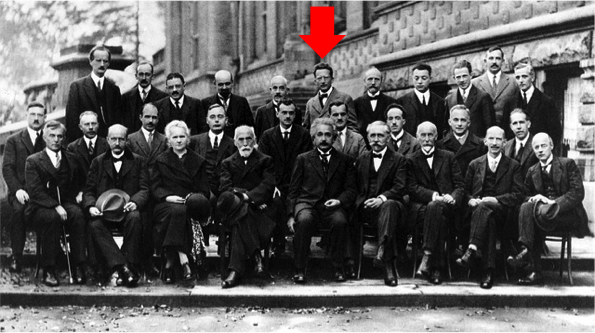The Schrodinger equation is a partial differential equation, whose solutions are wave functions that describe the quantum states of a system. It was formulated by Erwin Schrodinger in 1925, after de Broglie published his hypothesis, which proposed that all matter have wave-like properties.

Schrodinger reckoned that if electrons behave like waves, they could be described by a wave equation. This eventually led to the time-independent Schrodinger equation in one-dimension:
where and
.
is called the Hamiltonian operator, E is the total energy of the system and V is the potential energy of the system. Solutions to the equation are different expressions of ψ, the wave function. In terms of linear algebra, the Schrodinger equation is an eigenvalue equation; ψ is an eigenfunction and E is the corresponding eigenvalue. It is regarded as a postulate, meaning it is so fundamental that it cannot be derived.

Question
What is a postulate and how did Schrodinger arrive at the equation if it cannot be derived?
Answer
A postulate is a statement that everyone agrees is true. It is so fundamental that it cannot be proven. Examples of postulates include Newton’s 2nd law, F = ma, and the Euclidean statement that a line is defined by two points. Although we cannot derive the Schrodinger equation, we can show that it is consistent with the concept of energy conservation and de Broglie’s relation by substituting a simple wave function into the equation:
which computes to
Since is E – V(x) the kinetic energy of the system,
which is the de Broglie relation.
For a three-dimensional system, the Hamiltonian is:
The process of solving the equation for an atom is a tedious one. However, a complete set of solutions can be derived algebraically for the hydrogen atom, with each solution given by the general wave function:
where
R(r) and Y(θ, φ) are the radial component and angular component of the wave function respectively. is the associated Laguerre polynomial and
is the associated Legendre function.
While solving the Schrodinger equation, three quantum numbers, n, l and m, which appear in the radial component and angular components of the wave function, are defined. The solutions require the quantum numbers to have values stated in the following table:
|
Quantum numbers |
||
| Symbol | Name | Values |
| n | Principal | |
| Angular | ||
| Magnetic | ||
We have seen the principal quantum number n before, in the Bohr model. Each value of n refers to a shell. The angular quantum number is associated with the angular momentum of an electron and designates a subshell. The magnetic quantum number
is the projection of the angular momentum vector of the electron on the z-axis. The possible combinations of these three numbers specify the quantum states (energy states) of the atom. Despite the solutions for the hydrogen atom, Schrodinger did not have a convincing physical interpretation of the wave function ψ, other than it being a wave equation of an electron in the atom. Then came Max Born.
